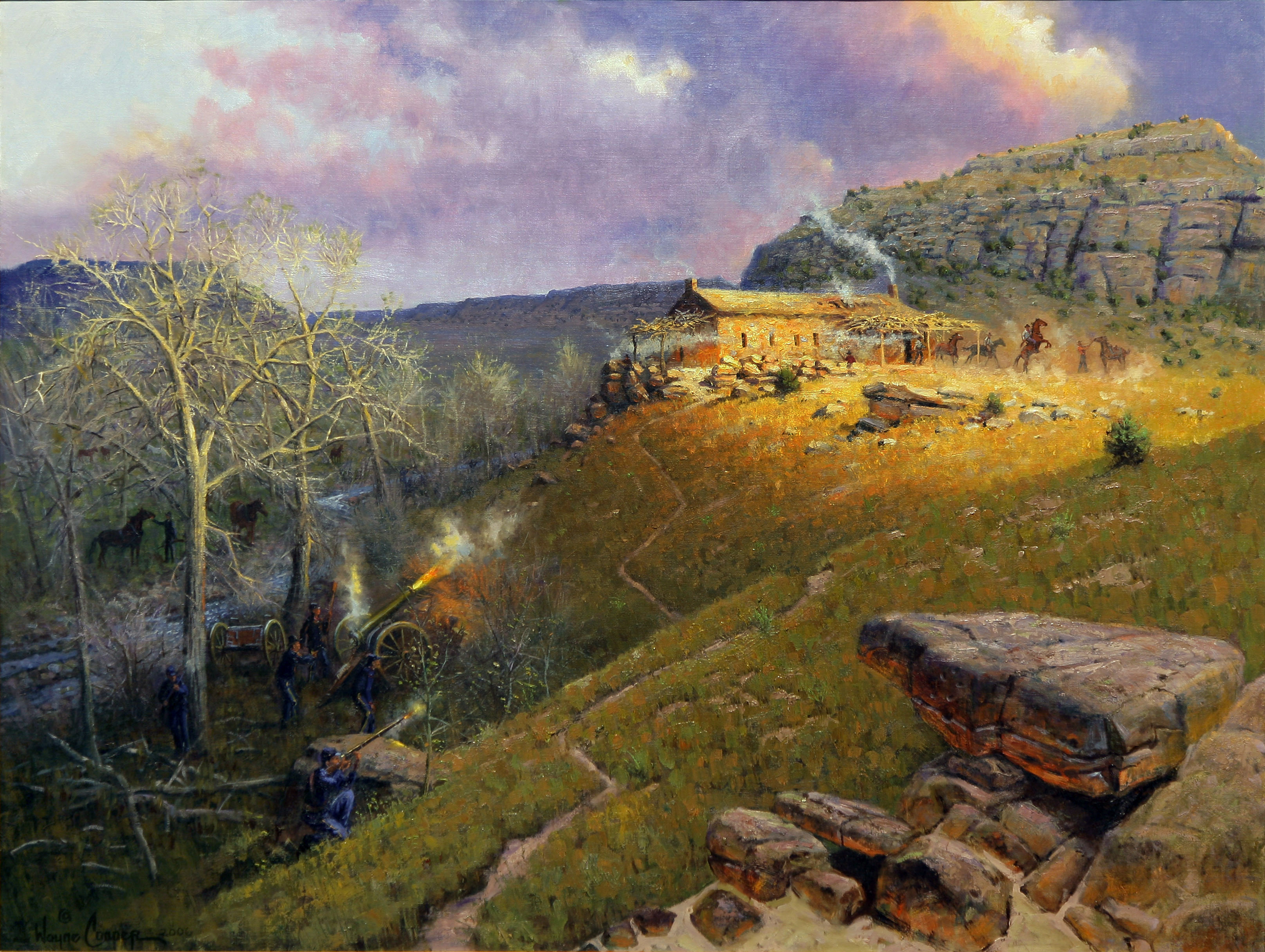Painting of Robber’s Roost to be Dedicated
 Painting of Robber's Roost
Painting of Robber's Roost
A painting of one of the Oklahoma Panhandle’s historic sites will soon be dedicated at the Oklahoma State Capitol. The painting of “Robber’s Roost” by artist Wayne Cooper was commissioned by the Oklahoma State Senate Historical Preservation Fund and is sponsored by Senator Owen and Charlette Laughlin.
The unveiling ceremony will take place on Wednesday, May 2, at 1:30 p.m. in the Senate Chamber. The public is invited to this ceremony and will be able to watch the events from the Senate Gallery on the 5th floor. Following the unveiling, a reception will take place in the Senate Lounge on the 4th floor behind the Senate Chamber. The Capitol photographer will be on hand to take photos of guests with the artist and the painting.
The painting's sponsor, Senator Owen Laughlin, has represented Northwest Oklahoma and the panhandle area since 1996. "My family and I were so honored to sponsor this beautiful painting," said Laughlin. "Robber’s Roost is just one of the many rich tales in the fabric of Oklahoma’s 100-year history. Unfortunately, many are unfamiliar with it and only the foundation of this once magnificent fortress is standing today. But by having this painting in the Capitol, the story of Robber’s Roost will never die.”
Besides serving as a senator, Laughlin is also a Certified Flight Instructor and attorney. He has also been in the banking business and managed real estate investments since his graduation from Southern Nazarene University in 1973 with a BA Degree in Political Science.
Robber's Roost was a rock fortress with stone walls 30 inches thick that was built by a band of outlaws led by Captain William Coe in No Man's Land in the late 1860's. It had one door and instead of windows had 27 tall, narrow portholes. This region near the Black Mesa was left unclaimed in 1850 when Congress established the boundaries for Texas, Kansas and New Mexico. Therefore, Congress declared it "neutral" or "No Man's Land" and soon forgot about it. The result was a region without any kind of government or law where outlaws and thieves began congregating because of the security the area offered them.
Coe had around 50 followers that were known for stealing livestock from the Army and settlers in the area. Because of the nature of the structure known as Robber's Roost, the Army brought in a cannon to fire on the fortress to rid the area of the outlaws.
The Preservation Fund was created and is overseen by former State Senator Charles Ford of Tulsa.
"This painting truly represents the history of Oklahoma’s Panhandle,” said Ford, President of the Preservation Fund. “The story of Robber’s Roost is a classic Wild West tale about outlaws and the cavalry; and I am pleased to have this painting as part of the Senate collection.”
Wayne Cooper, the artist, is an acknowledged national painter known for his portrayals of Western and Indian subjects. Cooper comes from a background of Indian heritage and was raised on a small ranch gaining first hand knowledge of Oklahoma ranch life. He currently lives in Depew, Oklahoma.
This and other art commissioned by the Oklahoma State Senate Historical Preservation Fund, Inc. can be found on the Internet at www.oksenate.gov.
 Oklahoma Senate
Oklahoma Senate

